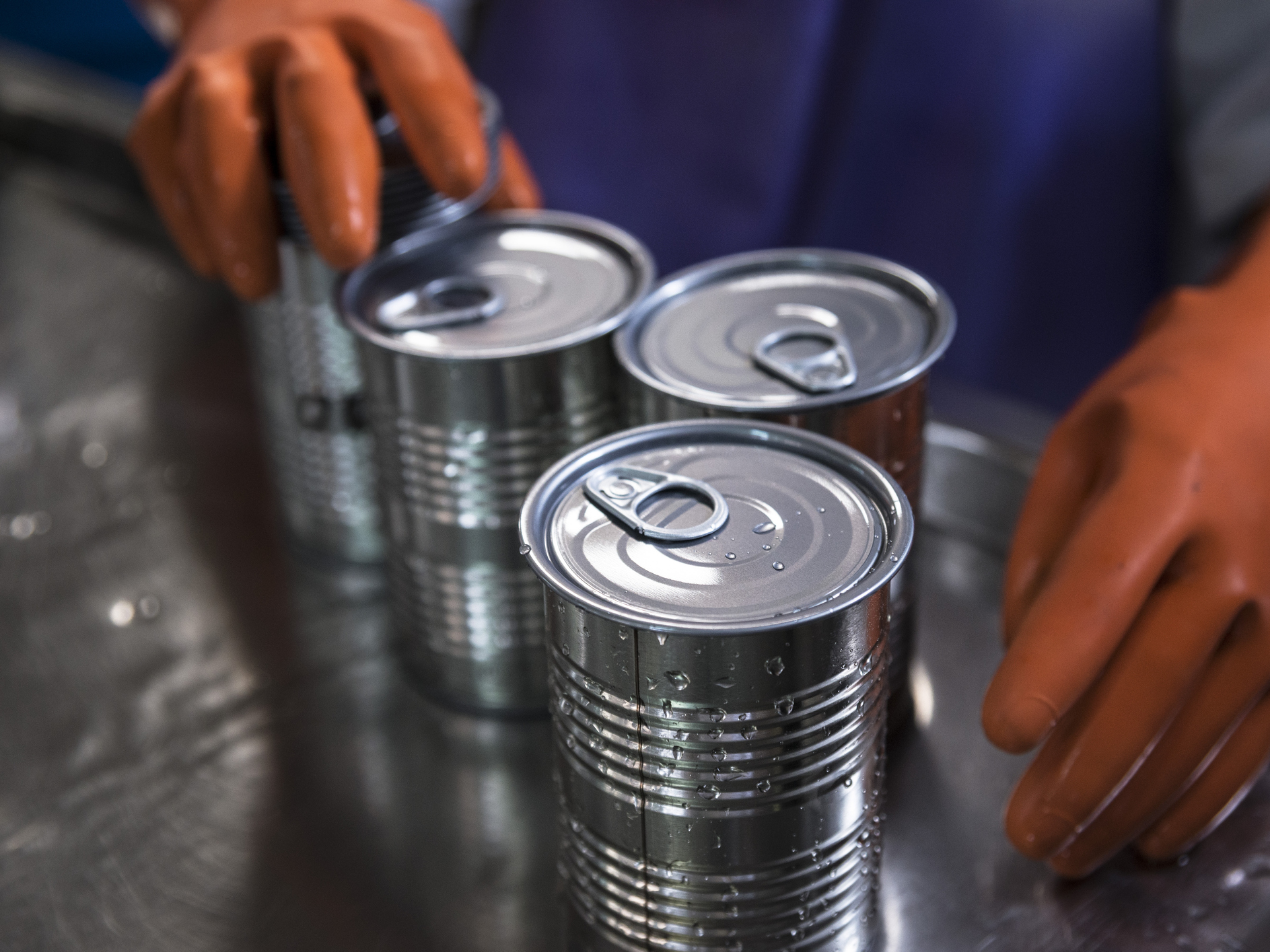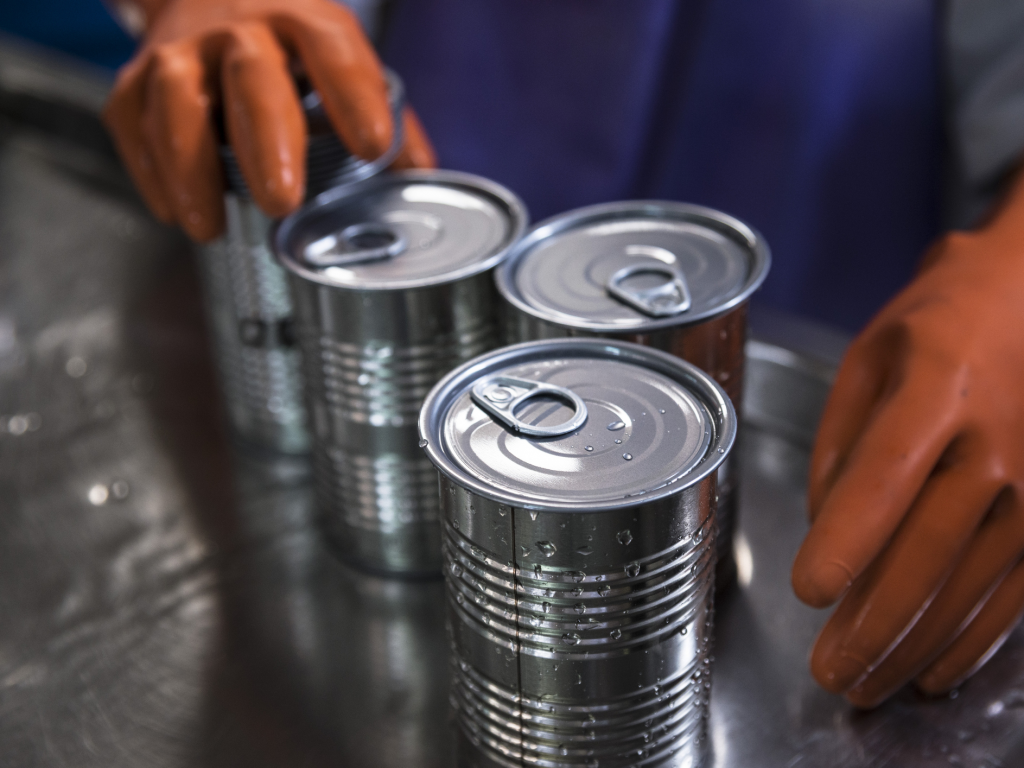
- Botulism is caused by some form of infection from the bacteria Clostridium botulinum.
- Foodborne botulism is usually caused by improperly canned food or honey.
- Wound botulism happens when a wound gets infected with bacteria.
- Visit Insider's Health Reference library for more advice.
Botulism is an illness caused by the toxins formed from the bacteria Clostridium botulinum. Although rare, botulism is a potentially deadly condition that causes several debilitating symptoms.
Insider spoke to Janilyn Hutchings, a certified food safety professional at StateFoodSafety, about the different types of botulism and how to protect yourself from this illness best.
Types of botulism
There are three common types of botulism, categorized by how they are spread. Each type is considered a medical emergency. In the most recent yearly survey, there were 182 laboratory-confirmed cases of botulism in the United States.
- Foodborne botulism, which reproduces in environments where oxygen is scarce, such as canned goods. This type contributes to 10% of the latest lab-confirmed cases.
- Wound botulism, accounting for 10% of these cases, occurs when Clostridium botulinum bacteria enter a cut and produce botulinum toxin, causing a dangerous infection.
- Infant botulism, which typically affects babies between 8 months and two years of age is the most common form of botulism at 77% of the lab cases. In this type, the bacteria often come from ingested honey or from soil or dust that contains Clostridium botulinum bacteria, which then grows inside the infant's intestinal tract. For this reason, babies less than one-year-old should not be given honey.
The highest likelihood of developing foodborne botulism is from improperly preserved home-canned foods. If not enough acid, sugar, or salt is used, or if spores are grown in low or no oxygen environments, then there is a higher risk of botulism.
Foodborne botulism symptoms
The symptoms of foodborne botulism typically begin 18 to 36 hours after consuming contaminated food. You may experience and of the following:
- Blurry vision
- Seeing double
- Nausea
- Vomiting
- Abdominal pain
- Dry mouth
- Difficulty speaking, swallowing, and/or breathing
- Dropping eyelids
- Muscles weakness or paralysis
Foodborne botulism is rare — only 19 cases in 2017 were due to food sources. Most often, this type of botulism is a result of poor home preservation techniques, although store-bought canned goods can also contain the toxin.
According to the CDC, in the 18 years spanning from 1996 to 2014, there were 210 cases of foodborne botulism, of which 145 (69%) came from home-canned goods, 30% of which were canned vegetables. Most of these incidences are attributed to human error on the part of the home canners.
Botulism food sources and treatment
Foods most commonly contaminated include those that are low-acid such as potatoes, asparagus, green beans, beets, corn, canned cheese sauce, chopped garlic in oil, canned tomatoes, and carrot juice. Low acids foods do not contain enough natural acid to prevent bacterial growth.
"If you're diagnosed with botulism, you can be treated with an antitoxin drug. Antitoxin prevents the botulism bacteria from causing any more harm than the body's nerves, but it can't heal any damage that's already been done," says Hutchings.
Recovery can take several weeks or months of hospitalization, especially if you are placed on a breathing machine due to any damage done to your breathing muscles. Surgery of affected areas and antibiotics may also be required.
Preventing foodborne botulism starts with proper canning techniques. The USDA has made available a home canning guide for reference. Some of the most important factors include:
- Washing foods thoroughly
- Removing peels
- Hot packing, which consists of boiling your food and packing it immediately into clean jars
- Adding acids like lemon juice or vinegar to lower acid foods
- Using clean jars and self-sealing lids made for canning
- Using a boiling water process or pressure canner for the recommended time for your food item
Other tips to reduce your chances of ingesting the botulinum toxin are to use up any garlic or herb-infused oils such as those used to dip bread, within four days and refrigerating any opened bottles of pickled or canned foods. It is also good practice to write the date you have opened any refrigerated or frozen goods on the container itself.
"The best way to prevent foodborne botulism is to avoid eating foods you suspect may be contaminated with Clostridium botulinum," says Hutchings. Hutchings recommends watching for the following warning signs when it comes to your canned goods:
- Dented or bulging cans
- Jars with a loose or swollen lid or a broken seal
- Packaged food with streaks of dried food originating from the seal
- Jars whose contents have rising air bubbles or an unnatural color
- Upon opening a package, unusual smells, foamy liquid, or cotton-like mold (could be white, black, blue or green) on the food or underneath the lid
Wound botulism
Wound botulism produces the same symptoms as the foodborne variety but may also cause typical signs of infection in the wound such as pain, swelling, redness, leaking pus or fluid, and a fever. The symptoms of infection may or may not be present, but if the other symptoms of botulism are occurring, be sure to seek immediate medical attention. Any wound can get botulism but this type is very rare and not typically spread from person to person.
Injectable illicit drug users are at a higher risk of developing botulism than others because illegal drugs may be contaminated with Clostridium botulinum. However, anyone who's undergone surgery, or had an accident or injury that results in an open wound may get the condition.
Not injecting illicit drugs will help you avoid botulism. If you do inject, don't share needles. As well, not injecting under the skin or into the muscle can help limit risk.
Wound botulism is also treated with an antitoxin, hospitalization, and potential surgery or antibiotics.
Infant botulism
Infant botulism occurs when spores are ingested with foods like honey, or in rare cases, from dust and dirt, and the spores begin to produce the botulinum toxin in the baby's large intestine. Infant botulism is different than foodborne botulism in that the toxin is produced post-ingestion instead of in the food before ingestion.
"While most healthy children and adults can ingest botulism spores without becoming ill, babies get sick because the spores can get into their digestive tracts and grow," says Hutchings. Babies are most at risk between aged two to eight months. During this age, they are more vulnerable to the germination of spores and the production of the toxin due to an underdeveloped digestive system. Older children with more developed digestive systems can move the spores through their digestive system before the toxin is produced.
The symptoms of infant botulism can be similar to foodborne botulism with additional warning signs to watch for:
- Difficulties with feeding such as sucking and swallowing
- Constipation
- Unusual or weak crying and irritability
- Lack of facial expression as muscle weakness affects the face including drooping eyelids and drooling
- General weakness, floppiness, inability to hold up the head, and tiredness
- Paralysis
Honey is a known food product that can carry botulism spores that can produce the toxin in infants. The spores are too large to pass through breast milk, so breastfeeding mothers do not need to avoid honey. It is recommended to never feed honey to an infant under one year of age.
Treating infant botulism includes the use of an antitoxin called BabyBIG®. This antitoxin helps to reduce the hospital stay of infants with botulism. It is administered intravenously along with fluids that provide nourishment when the baby is unable to feed adequately due to weakened feeding muscles. If breathing is affected, a breathing machine (ventilator) may be used.
Infant botulism can best be avoided by following the advice for foodborne botulism along with not feeding babies honey before their first birthday, since even a tiny amount of honey can be a risk.
Insider's takeaway
Foodborne botulism is usually caused by improperly canned food. Symptoms include nausea, vomiting, and abdominal pain. Wound botulism happens when a wound gets infected with the bacteria and is especially common among illegal injectable drug users. Another cause of infant botulism is consuming honey, as the spores in honey can multiply in a baby's large intestine and cause infection.
Dit artikel is oorspronkelijk verschenen op z24.nl
